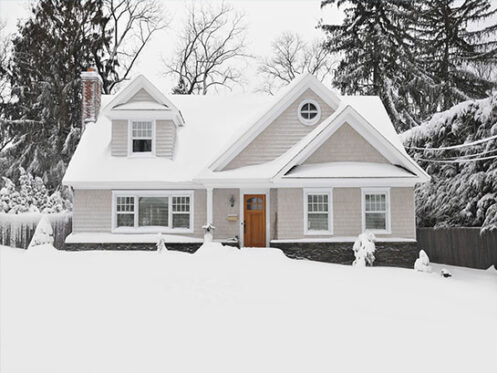Snow-covered roofs may create a picturesque winter scene, but they can also pose a significant threat to your home. The weight of accumulated snow can lead to structural damage, leaks, and even roof collapses if left unaddressed.
As trusted roofing professionals at Jim Rhubart Roofing, we understand the importance of protecting your home’s integrity during the winter months. In this comprehensive guide, we’ll share essential tips on safely removing snow from your roof without causing damage. Whether you’re dealing with asphalt shingles, tile, or metal roofing, these strategies will help you safeguard your investment.
Assess the Situation
Before you embark on any snow removal operation, start by evaluating the condition of your roof. Consider factors such as the amount of snow, its weight, and the pitch of your roof. Heavily accumulated, wet snow is more problematic than light, fluffy snow. If you are unsure or uncomfortable with the assessment, consult professionals like Jim Rhubart Roofing to inspect your roof and provide expert guidance.
Assessing the situation before you begin any snow removal operation is a critical step in ensuring the safety of your roof and, by extension, your home. This evaluation involves taking a close look at several key factors:
Snow Accumulation: Determine the depth of snow on your roof. This assessment will help you gauge the overall workload and the potential risk involved. Heavily accumulated snow puts more weight on your roof and increases the risk of structural damage.
Snow Type: Snow isn’t always the same; it can range from light, powdery snow to heavy, wet snow. The type of snow matters because wet snow is denser and heavier. It exerts more pressure on your roof’s structure and can increase the risk of damage, especially if it’s allowed to accumulate.
Roof Pitch: The pitch, or slope, of your roof plays a significant role in snow removal. Roofs with steep pitches tend to shed snow more easily, whereas flat or low-pitched roofs may trap more snow. The angle of your roof can influence your removal approach, tools, and the necessary safety measures.
Assessment Comfort: It’s essential to assess your own comfort and experience with snow removal. If you have any doubts about your ability to safely remove snow, it’s best to consult professionals who are experienced in handling these situations. This can be especially important if your roof has a high pitch or if you are dealing with heavy snow.
Once you’ve considered these factors, you can make an informed decision about whether to proceed with snow removal yourself or to seek professional help. For those who are confident and equipped for the task, you can move on to selecting the right tools and techniques for effective snow removal. However, if you have any reservations or specific concerns about your roof’s condition, consulting roofing professionals like Jim Rhubart Roofing is a prudent step to ensure the safety and integrity of your home.
USE THE PROPER TOOLS TO AVOID ROOF DAMAGE
Gathering the right tools and equipment is an essential part of preparing for safe and effective snow removal from your roof. Here’s a more detailed look at the equipment you’ll need:
Roof Rake: A roof rake is a specialized tool designed for snow removal. It typically features a long telescoping handle, enabling you to reach and clear snow from your roof while standing on the ground. Look for a roof rake with a non-abrasive edge to prevent any damage to your roofing materials. The length of the handle is particularly crucial, as it should be sufficient to reach the highest points of your roof without needing to climb on it.
Snow Cutter or Push Broom: In some cases, especially if you’re dealing with densely packed snow or ice, a snow cutter or push broom can be handy. These tools are effective at breaking up thick snow and ice layers on your roof. Again, ensure that the cutting edges are non-abrasive to prevent damage.
Long Extension Pole: If your chosen tool, whether it’s a roof rake or a snow cutter, doesn’t have an adequately long handle, you can use a separate extension pole. Make sure it securely attaches to your tool to provide the necessary reach.
Safety Harness: Safety should be a top priority when removing snow from your roof. Wear a safety harness to keep you anchored and secure while you work. This harness can be connected to a stable structure, such as a properly anchored roof truss or a solid anchoring point on the ground.
Non-Slip Footwear: Snow and ice can make your roof slippery and treacherous to walk on. It’s essential to wear non-slip footwear with good traction to reduce the risk of accidents. Avoid regular boots or shoes that may not provide the grip you need in these conditions.
Work with a Partner: Snow removal from the roof is a task best done with a partner. Having someone there ensures that help is readily available in case of an emergency. They can also assist by handing you tools and equipment, holding the ladder securely, and watching out for your safety.
Equipped with these tools and safety equipment, you’ll be well-prepared to safely and effectively remove snow from your roof. Remember that using non-abrasive tools and wearing the appropriate safety gear is crucial to prevent damage to your roofing materials and ensure your well-being throughout the process.
WHAT ARE THE BEST TECHNIQUES FOR ROOF SNOW REMOVAL?
Effective snow removal techniques are essential to ensure your safety and prevent any damage to your roof, shingles, or gutters. Here’s a detailed explanation of these techniques:
Work from the Edge: Always start at the edge of your roof when removing snow. It’s generally the safest and most effective approach. This way, you can prevent heavy loads of snow from building up near the eaves, where it’s most likely to cause damage. Begin by standing securely on a ladder placed at the roof’s edge.
Push Snow Downward: When clearing snow, push it downward in the direction of gravity rather than pushing it across the roof. This approach avoids the risk of forcing snow under shingles or damaging gutters. Using a roof rake or a snow cutter with a long extension pole, gently guide the snow off the roof and onto the ground.
Avoid Sharp Tools: Using sharp tools, like shovels or metal implements, is discouraged during snow removal. These can easily damage your roof shingles and gutters. Opt for tools specifically designed for snow removal, which usually have non-abrasive edges to protect the integrity of your roofing materials.
Keep an Eye on Icicles: While clearing snow, be vigilant for icicles forming along the roof’s edge. Icicles can pose a significant safety hazard if they fall unexpectedly. Never stand directly beneath icicles. If you notice any large icicles forming, it’s a good idea to address them separately by using a long extension pole or rake to gently knock them down from a safe distance.
Consistent Clearing: If you’re dealing with heavy snowfall, consider clearing the roof in sections rather than trying to remove all the snow at once. Working in sections is safer and more manageable. Continue the process until you’ve removed enough snow to prevent any potential damage.
By following these snow removal techniques, you’ll minimize the risk of harming your roofing system and ensure that you stay safe throughout the process. Prioritize your well-being and the preservation of your roof and gutters by adopting these best practices for snow removal.
DO NOT GO FOR THE QUICK FIX
Staying safe and avoiding hasty solutions is paramount when dealing with snow removal from your roof. Quick fixes, while tempting, often lead to more problems than they solve. Let’s delve deeper into the reasons why it’s crucial to refrain from these approaches:
- Corrosive Effects of Salt: While it might seem like a straightforward solution, sprinkling salt on your roof can have detrimental consequences. Salt can accelerate the corrosion of your roofing materials, especially metal components like flashing and gutters. This corrosion weakens the integrity of your roof and can lead to costly repairs or premature replacements.
- Formation of Ice Dams: Using hot water to melt snow on your roof is another method that may appear effective but can be counterproductive. When hot water comes into contact with snow and ice, it creates a temporary solution by melting the top layer. However, the melted snow can run down your roof and refreeze at the eaves, forming ice dams. These ice dams trap subsequent meltwater on your roof, potentially causing leaks and further damage to your shingles and roofing structure.
- Risk of Incomplete Removal: Quick fixes often provide only temporary relief, and the underlying issue remains unaddressed. For instance, melting snow with hot water may clear visible snow, but it doesn’t necessarily remove the ice that lies beneath it. This lingering ice can pose a significant threat when it refreezes and expands, potentially damaging your roof further.
- Future Damage and Costs: Resorting to quick fixes can lead to greater damage in the long run, which translates to higher repair or replacement costs. Roofing repairs resulting from corrosion, ice dams, or incomplete snow removal can be more expensive and time-consuming than practicing safe, thorough snow removal methods.
Instead of quick fixes, it’s advisable to follow safe and efficient snow removal techniques, use the right tools, and prioritize long-term roof preservation. When in doubt, consult with professionals like Jim Rhubart Roofing, who can provide expert guidance and ensure that your roof remains in optimal condition throughout the winter season. Remember, safety and the well-being of your roofing system should always be top priorities when managing snow on your roof.
A LITTLE PREVENTATIVE CARE GOES A LONG WAY
- Adequate Attic Insulation: Proper attic insulation is an essential component of snow buildup prevention. Insulation helps maintain a uniform temperature on your roof, minimizing the formation of ice dams. It accomplishes this by preventing warm indoor air from escaping and rising to the roof, where it can melt snow, only to refreeze at the eaves. By ensuring your attic insulation is in good condition and meets recommended R-values for your region, you create a barrier that keeps the roof’s temperature consistent and discourages ice dam formation.
- Effective Ventilation: Alongside insulation, adequate ventilation plays a crucial role in preserving your roof’s integrity during the winter months. Roof ventilation allows cold air to circulate in the attic and ensures that any heat that does reach the roof dissipates evenly. Proper ventilation helps maintain a roof temperature that discourages snow from melting and refreezing at the eaves, thus preventing ice dam formation.
- Installation of Snow Guards: Snow guards, also known as snow retention systems, are devices installed on your roof to control the sliding of snow and ice. These guards are strategically placed to divide snow into manageable sections rather than allowing it to slide off your roof in large, potentially dangerous sheets. By doing so, snow guards help distribute the weight of snow evenly and minimize the risk of sudden roof avalanches. This, in turn, reduces the potential for damage to your roof, gutters, and any objects or individuals below.
- Heated Cables: Heated cables, or heat tape, are another effective solution for preventing snow and ice buildup. These cables are installed on your roof’s trouble spots, such as the eaves and gutters, and are designed to melt snow and ice as it accumulates. Heated cables are especially useful in areas prone to heavy snowfall and ice dam formation, as they ensure a continuous flow of water, preventing ice dams from gaining a foothold on your roof.
By taking these preventative measures, you can significantly reduce the risk of snow accumulation, ice dam formation, and potential damage to your roofing system. Whether through insulation, ventilation, snow guards, or heated cables, these strategies help protect your roof and enhance its longevity, ensuring it remains resilient throughout the winter season. Consult professionals like Jim Rhubart Roofing for expert advice and assistance in implementing these preventative measures to safeguard your home and roofing investment.
GET THAT HEAVY SNOW OFF YOU ROOF
Safely removing snow from your roof is essential for the longevity and integrity of your roofing system. Jim Rhubart Roofing understands the unique challenges of winter weather, and we are dedicated to helping you protect your home. By assessing the situation, using the right tools, following safe techniques, and taking preventative measures, you can maintain a sturdy and resilient roof throughout the winter season. If you require any assistance with roof maintenance, repairs, or snow removal, don’t hesitate to reach out to Jim Rhubart Roofing, your trusted partner in roofing solutions.






